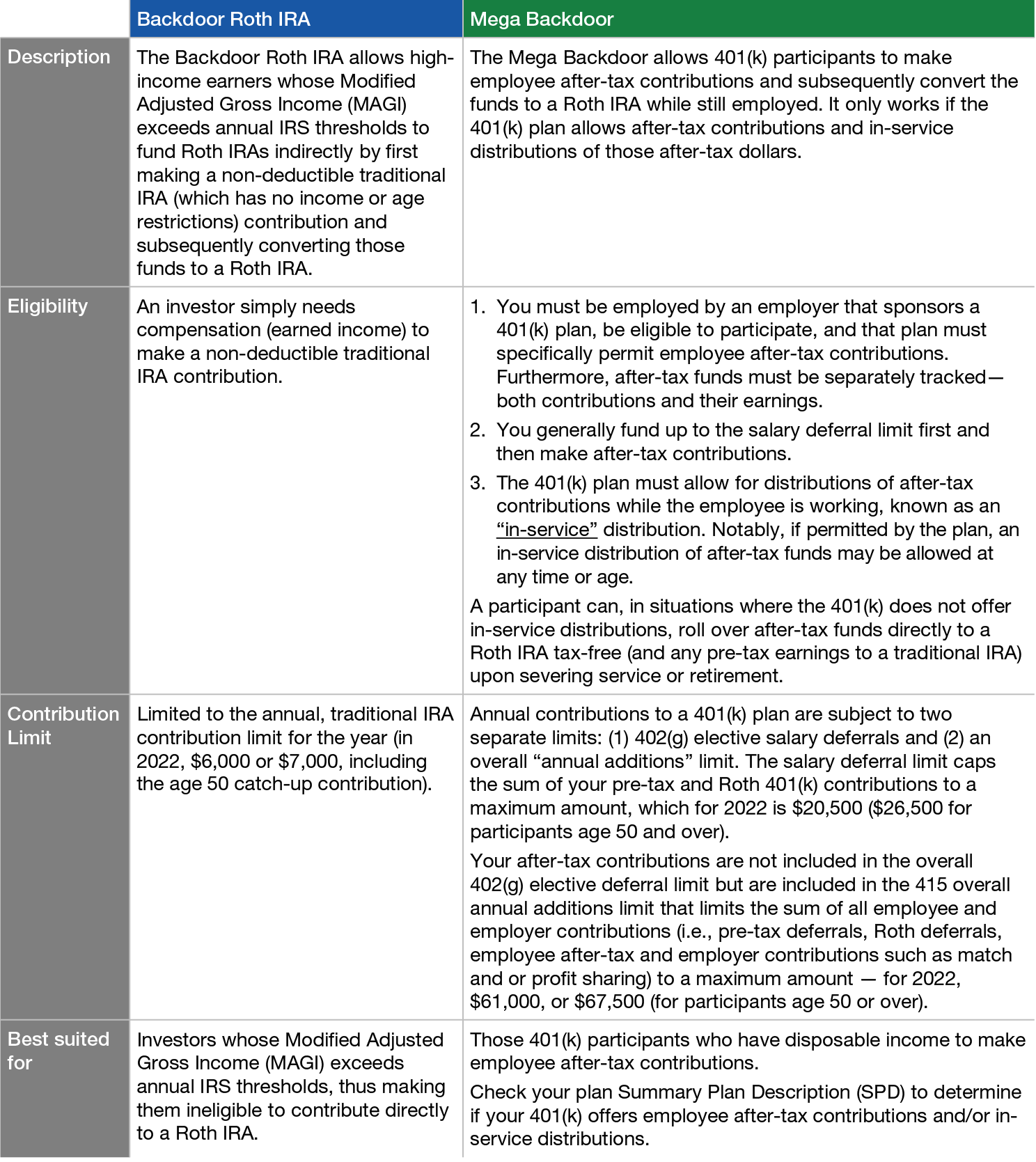Why don’t more 401(k) plans offer after-tax contributions?
IRS rules require 401(k) plans to satisfy certain “tests” ensuring a plan doesn’t unfairly discriminate in favor of Highly Compensated Employees (HCEs) verses non-HCEs. A plan must pass two types of annual IRS nondiscrimination tests annually: Actual Deferral Percentage (ADP) and Actual Contribution Percentage (ACP) tests. The ADP test regulates pre-tax deferrals and Roth contributions, whereas the ACP test regulates employer contributions (match, profit sharing) and employee after-tax contributions.
These rules limit the amount of after-tax contributions that HCEs can make, based on the amount made by NHCEs. Since HCEs are often the only participants who are able to afford after-tax contributions, it’s difficult for plans to pass the nondiscrimination test. Thus a plan offering after-tax contributions would need to pass the ACP or risk it interfering with the Mega strategy. That’s why many 401(k) plans don’t offer after-tax contributions, especially smaller employers.
Safe harbor 401(k) plan contributions release the plan from passing the ADP test, while allowing the plan to bypass ACP test, but only with respect to employer-matching contributions. Safe harbor contributions do not relieve the plan from ACP testing employee after-tax contributions.
PRACTICE TIP: The Mega Backdoor Roth is a good fit for a Solo 401(k) plan. A Solo 401(k) plan isn’t subject to IRS nondiscrimination rules or testing. Without employees, the plan automatically satisfies the ACP test. Notably, a Solo 401(k), like a 401k plan with employees, must allow for after-tax contributions.
Pro-Rata Rule
IRS Notice 2014-54 offers insight regarding the tax treatment when distributing after-tax funds from a 401(k) plan, whether it’s an in-service distribution or one that occurs after separation from service.
An in-service distribution of employee after-tax contributions is subject to the pro-rata rule, which determines the taxable amount of the distribution. A majority of 401(k) plans separately account for after-tax contributions and their earnings. Here, the pro-rata distribution rule applies only to that account. Therefore, the taxable portion of each distribution is the amount of (pre-tax) earnings on after-tax contributions There is no need to include the value of other separately tracked funds (i.e., pre-tax deferral, Roth, and employer contributions, if any). That amount is taxable if converted to a Roth IRA, whereas the distribution is tax-free if the pre-tax funds are rolled over to a traditional IRA.
Therefore, you can’t distribute only after-tax contributions to make a Roth conversion. Instead, per Notice 2014-54, distributions are done pro-rata. Thus, taking a distribution leads you to withdrawing (only) a portion of your after-tax contributions. In other words, distributions must be done on a pro-rata basis as the funds leave the plan if a Roth conversion is occurring, which means if you try to take just some of the account balance, you only get some of the after-tax contributions! However, it’s possible receive favorable tax treatment for in-service distribution of after-tax contributions and earnings to Roth IRA conversions.
Mega Backdoor Example:
· Anthony, 38, works for PnQ Inc. The PnQ 401(k) offers both after-tax employee contributions and in-service distributions.
· His after-tax account is valued at $90,000 ($50,000 of after-tax contributions + $40,000 of earnings, which are pre-tax and separately tracked.
· Anthony leverages his plan’s in-service distribution option and uses the Mega Backdoor Roth strategy to partially convert $50,000 (from his after-tax account) to a Roth IRA.
· Anthony cannot “cherry pick” $50,000 of after-tax contributions ensuring a tax-free Roth IRA conversion.
· Instead, 56% ($50,000/ $90,000) of the funds are considered after-tax contributions, resulting in a $28,000 tax-free distribution and conversion of basis, whereas the remaining $22,000 will be taxable as it’s attributable to the earnings (which are pre-tax).
· IRS guidance offers a tax-free alternative. Here, Anthony “splits” the proceeds, sending (converting) $28,800 to a Roth account tax-free, while $22,200 can be rolled over tax-free to a traditional IRA! This allocation of plan funds was blessed by the IRS (via Notice 2014-54), which confirmed that participants with both pre-tax and after-tax funds in their 401(k) can roll over pre-tax funds to a traditional IRA and after-tax dollars to a Roth IRA tax-free.
On an ongoing (annual) basis, like the Backdoor Roth IRA, you could make employee after-tax contributions (into your 401(k)) and subsequently do a Mega Backdoor Roth conversion each year.
Learn more
If you are contemplating a Mega Backdoor Roth and or a Backdoor Roth IRA, be sure to consult with your financial professional.


